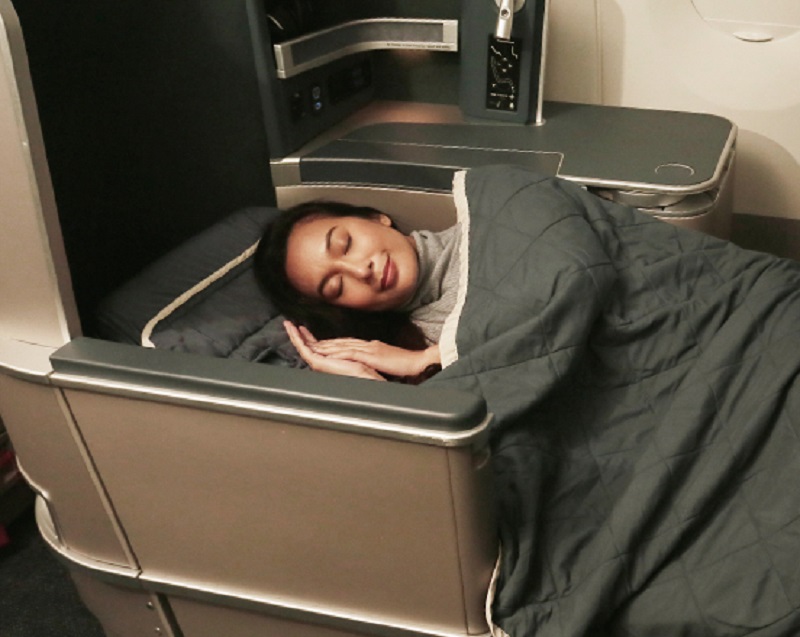 Philippine Airlines
Philippine Airlines 
Philippine Airlines, a trading name of PAL Holdings, was founded in 1941 by a group of businessmen led by Andres Soriano, who was one of the country's leading industrialists. A month after being incorporated by a group of Filipino businessmen, Philippine Airlines took to the skies with a twin-engine, five-seater Beech Model 18 aircraft from Nielsen airfield in Makati to Baguio. In the same year, the Philippine government invests in PAL, paving the way for the airline's nationalisation. 5 years later, PAL becomes the first Asian airline to cross the Pacific when it operated a chartered Douglas DC-4 on the first of several flights to ferry home initially 40 US servicemen. Each crossing took 41 hours with fuelling stops at Guam, Wake, Kwajalein and Honolulu.
Today, it is the flag carrier of the Philippines. The PAL's main hub is located in Ninoy Aquino International Airport (MNL), Manila and two secondary hubs in Mactan–Cebu International Airport (CEB), Cebu and Francisco Bangoy International Airport (DVO), Davao. PAL has a subsidiary airline, PAL Express: it operates only regional routes while PAL operates both domestic (Cebu, Davao, General Santos, Kalibo, Manila and Zamboanga) and international routes.
PAL is known for being the first airline in the Philippines to be accredited by the International Air Transport Association with passing the IATA Operational Safety Audit (IOSA), having been accredited in February 2007.
The current PAL logo features two blue and red sailed triangles. An eight-rayed yellow sunburst that is shaped like a Sailboat was superimposed on top of the blue triangle.
Today, under the slogan "The Heart of the Filipino", Philippine Airlines operates 43 international routes and 31 domestic routes, with a subsidiary, PAL Express, across Asia–Pacific (including Australia and New Zealand), Europe, the Middle East and North America.
Philippine Airlines offers a modern and varied fleet designed to provide comfort and efficiency for travellers. As of January 2025, the airline proudly operates a total of 78 aircraft, featuring both narrowbody and widebody fleets from Airbus and Boeing. Whether the traveller is embarking on a short domestic trip or a long-haul international journey or experience top-notch service and reliability aboard these aircraft. The fleet includes: 14 Airbus A320-200, 22 Airbus A321-200, 8 Airbus A321neo, 11 Airbus A330-300, 2 Airbus A350-900, 10 Boeing 777-300ER and 11 De Havilland Canada DHC-8-400.
With this impressive fleet, Philippine Airlines takes every passenger wherever their travel dreams may lead. Whether it’s a quick business trip or a leisurely vacation, passengers enjoy a smooth, comfortable journey every time.
Philippine Airlines currently offers three classes, Business, Premium Economy, and Economy, depending on the aircraft.
Travel in comfort before your flight with Philippine Airlines' Mabuhay Lounges, available at key airports for passengers looking for a peaceful and convenient space to unwind. Whether you're flying Business Class or an Elite Mabuhay Miles member (excluding PAL Express flights), you’ll enjoy access to these premium lounges, offering a serene environment and a range of excellent amenities.
What you can enjoy at the Mabuhay Lounges: complimentary open bars and catering, power supply at every lounge chair and free Wi-Fi. Mabuhay Lounges are conveniently located at the following airports, ensuring you can enjoy this VIP experience before you take off:
Philippine Airlines (PAL) has been certified with the 4-Star Airline quality ranking by Skytrax, the international air transport rating organisation. The rating evaluates seats, amenities, food & beverages, IFE, cleanliness and more. The service rating is for both cabin staff and ground staff.